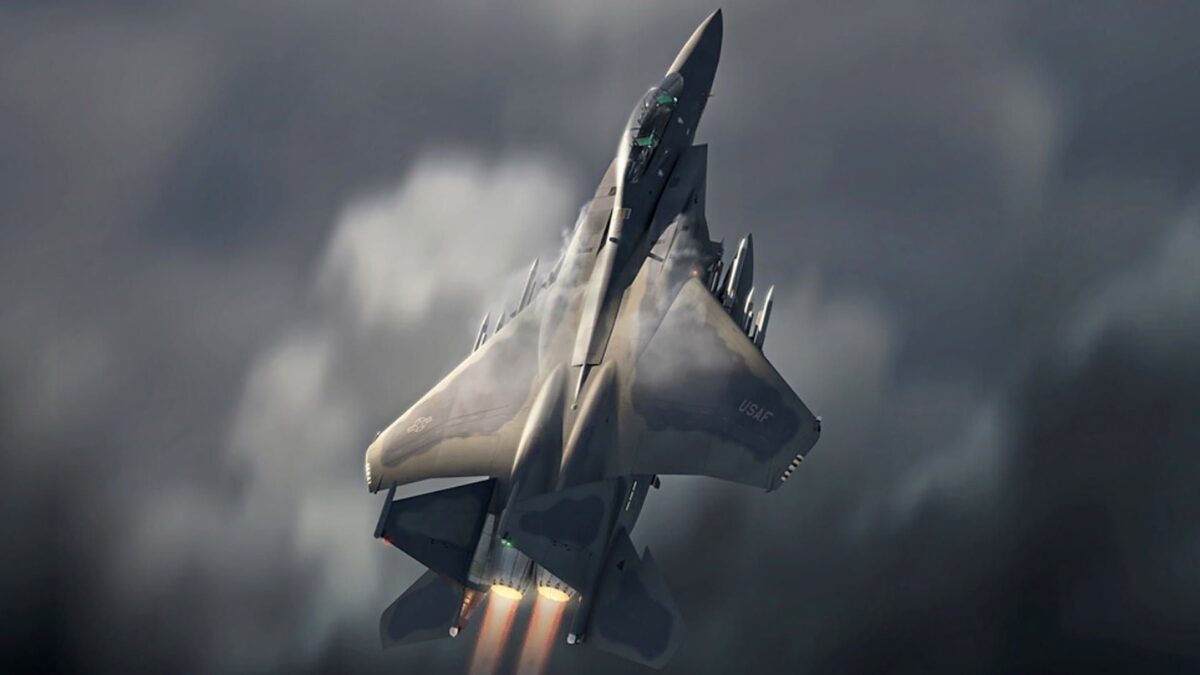Best Fighter Jets – Who Would You Choose? F-35? F-22? F-16? What fighters would you select for the 5 best fighters of all time? While no one will most likely one-hundred percent agree with any list that comes out, here is our take on making sense of what were the best fighters of all time: So then, which warbirds deserve to be ranked as The 5 Best Jet Fighters of All Time? Granted, this is a slightly less daunting task than my previous assignment of determining the title of singular Best Fighter Plane Ever, but still, a highly subjective matter that’s going to stir to sit up some controversy no matter what answers I give.
That said, some sort of objective measuring stick has to be used to narrow down the list and make a well-reasoned argument along the way, so here are my two main criteria for making my Top 5 List: (1) overall kill tally and (2) air-to-air kill ratio. A
After all, the acid test of any fighter plane is to be able to reliably engage & destroy the enemy and bring its pilot (and navigator) back home.
With that in mind, let’s get on with my list of The 5 Best Fighters of All Time (drum roll):
Best Fighter Jets – The F-15 Eagle: Okay, this selection shouldn’t stir up too much controversy, right?
After all, nothing, and I mean nothing else out there can hold a candle to the absolutely mind-boggling 104:0 air-to-air kill ratio of the F-15 Eagle.
Yes, three F-15E Strike Eagles have been lost to enemy ground fire, but against enemy warbirds, the Eagle jet’s losses amount to a big fat goose egg (avian pun intended). This record becomes even more amazing when you bear in mind that the F-15 has been in service, in one variant of another, since 1976.
The very first Eagle driver to score an aerial victory was Israeli Air Force (IAF) pilot Moshe Malink, who achieved this milestone back in 1979.
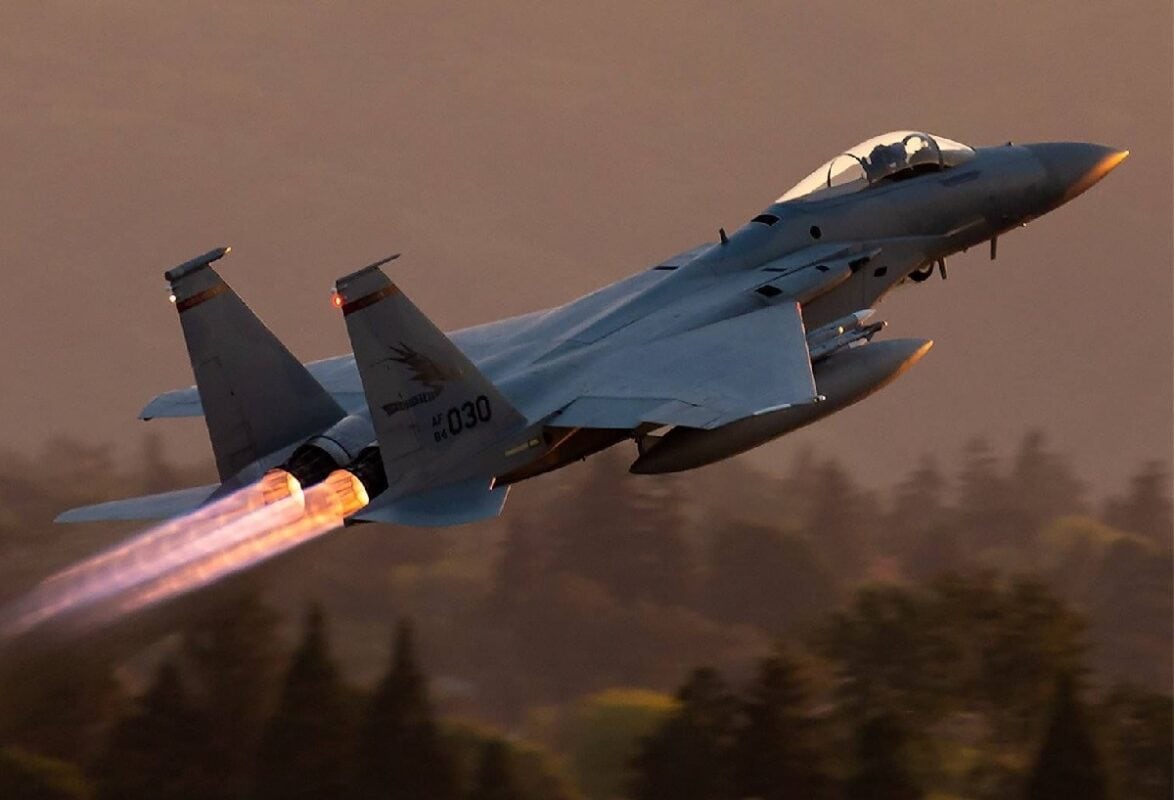
F-15 fighter. Image: Creative Commons.
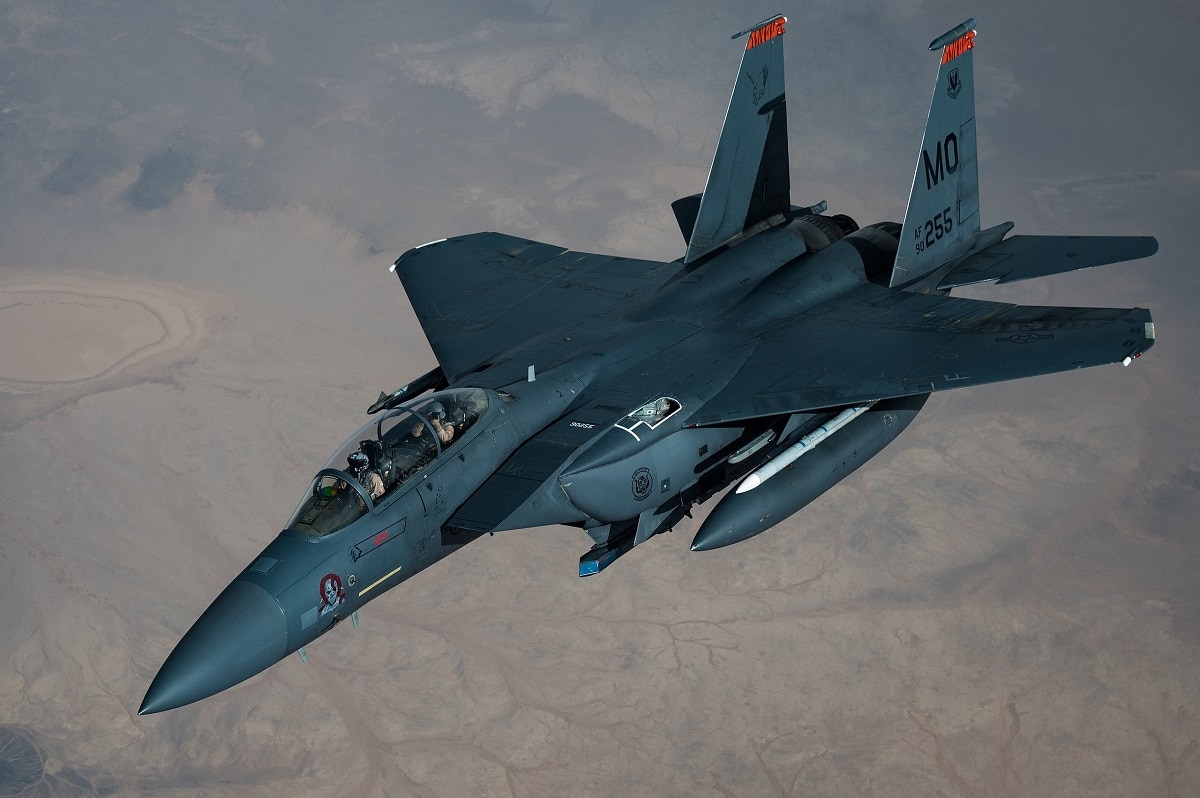
An F-15E Strike Eagle flies in the U.S. Central Command area of responsibility Jan. 27, 2021. The F-15E is a dual-role fighter designed to perform air-to-air and air-to-ground missions, demonstrating U.S. Air Force Central Command’s posture to defend and deter against potential aggression. (U.S. Air Force photo by Staff Sgt. Sean Carnes)
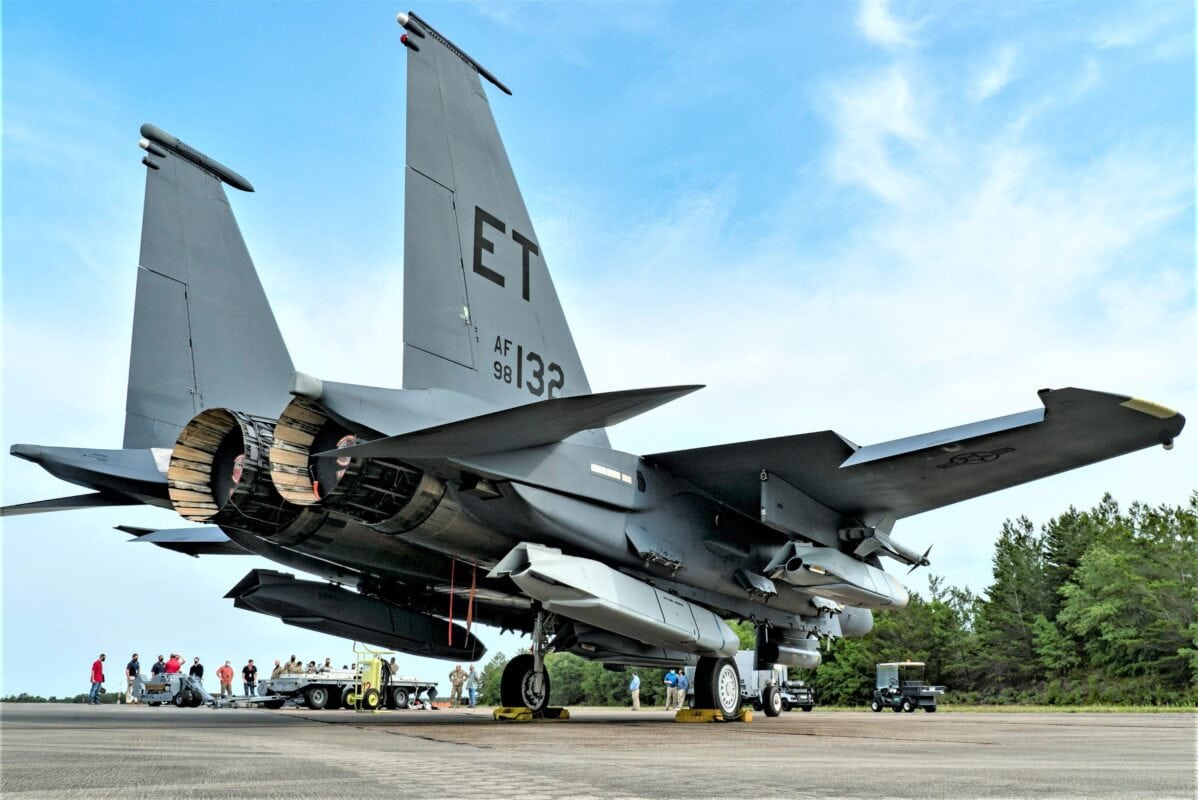
Image: USAF

A Boeing (McDonnell Douglas) F-15E “Strike Eagle” assigned to the 492nd Fighter Squadron performs a high-speed pass over RAF Lakenheath, England, April 10, 2019. The 492nd conducts routine training daily to ensure RAF Lakenheath brings unique air combat capabilities to the fight when called upon by U.S. Air Forces in Europe-Air Forces Africa.
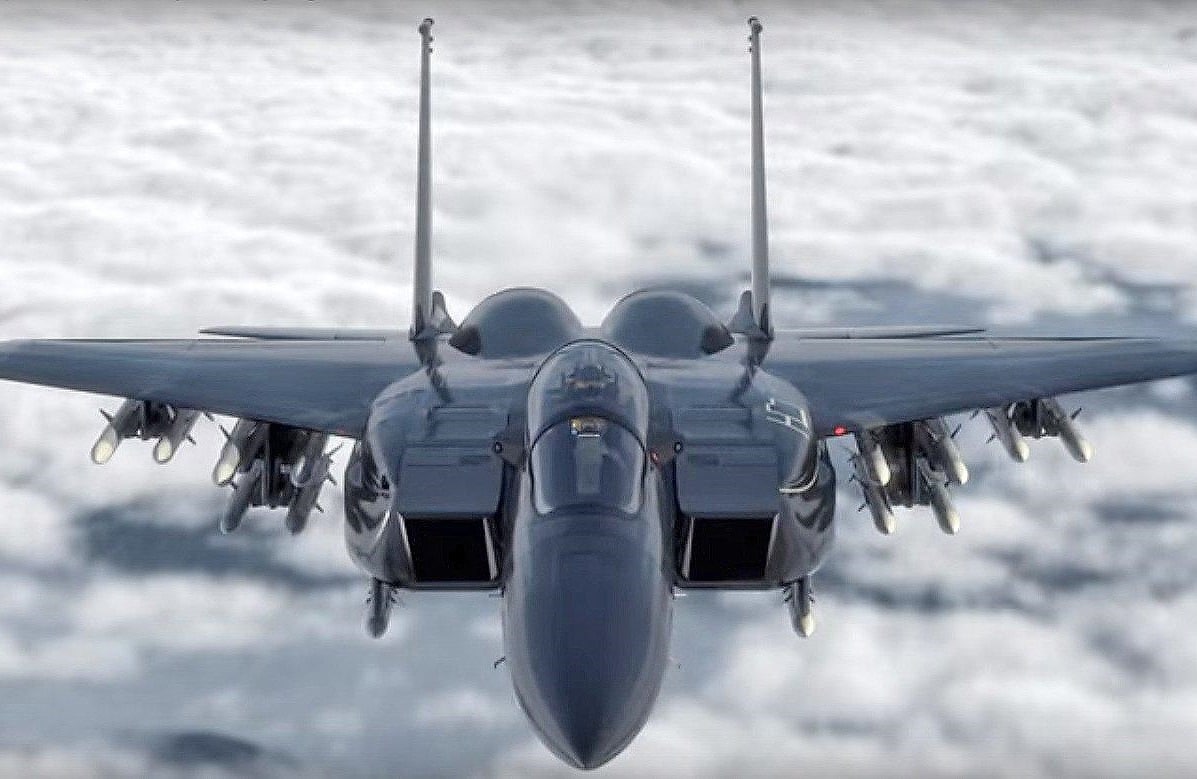
Image: Creative Commons.
From there, the legend grew and grew, and will probably continue to grow thanks to the latest variant, the F-15EX.
Best Fighter Jets – The F-14 Tomcat:
All righty then, all you Naval Aviator/Naval Flight Officer (NFO) types and Top Gun fans out there, here’s your moment in the sun.
Though not able to claim the undefeated status that the Eagle can boast about, the F-14 Tomcat can nonetheless lay claim to a very respectable 135:4 kill ratio.
As I previously noted in my standalone article on the F-14, “Perhaps the greatest irony of the Tomcat’s kill tally is that the majority of its scores were achieved not by American pilots, nor even the pilots of a U.S. ally, but rather by the pilots of an adversary nation,” that adversary nation being Iran.
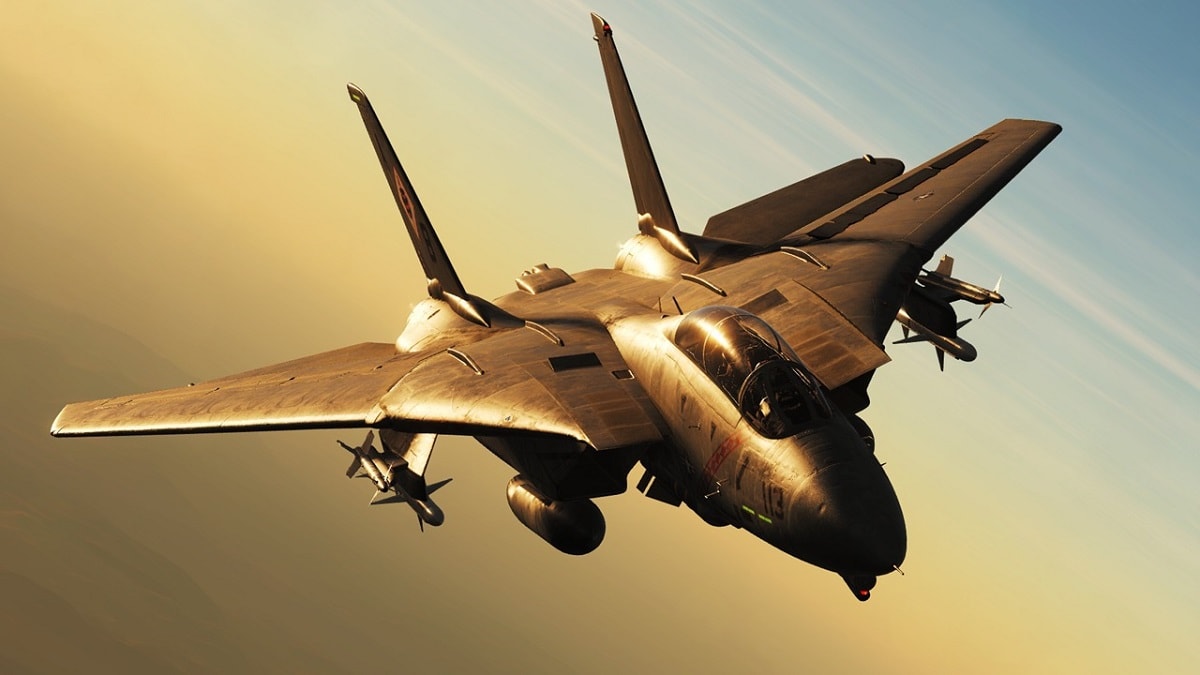
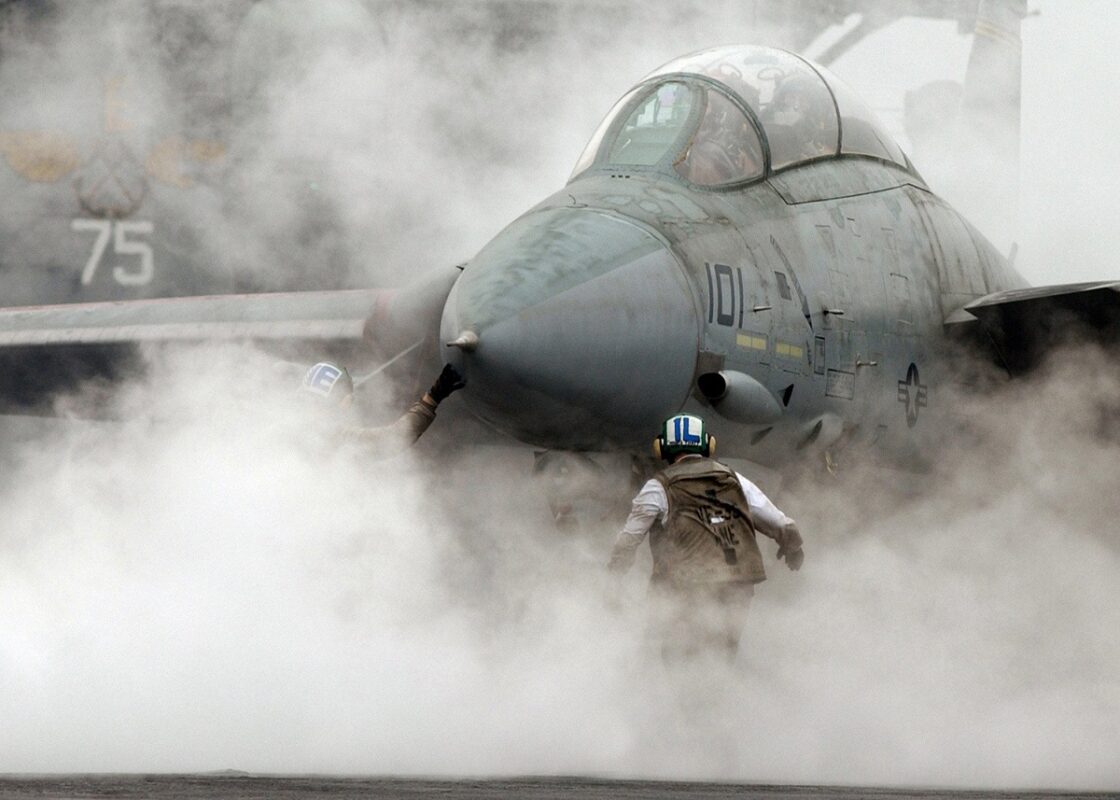
Image: Creative Commons.
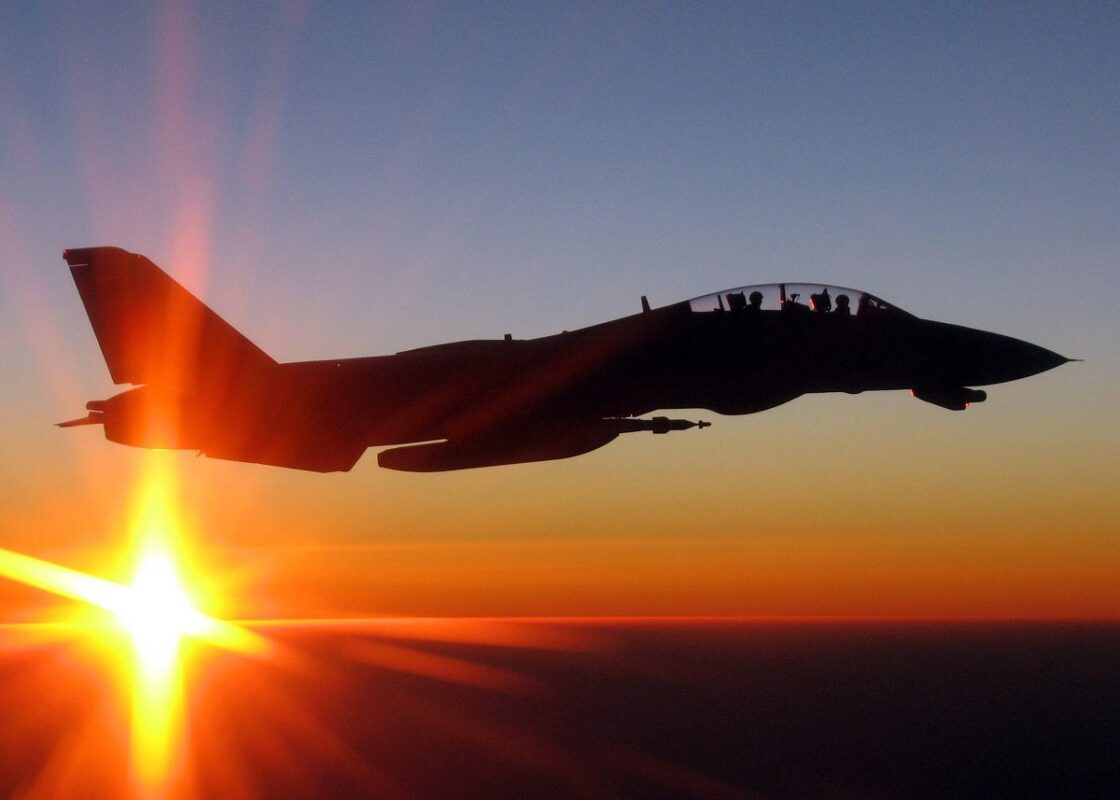
Image: Creative Commons.
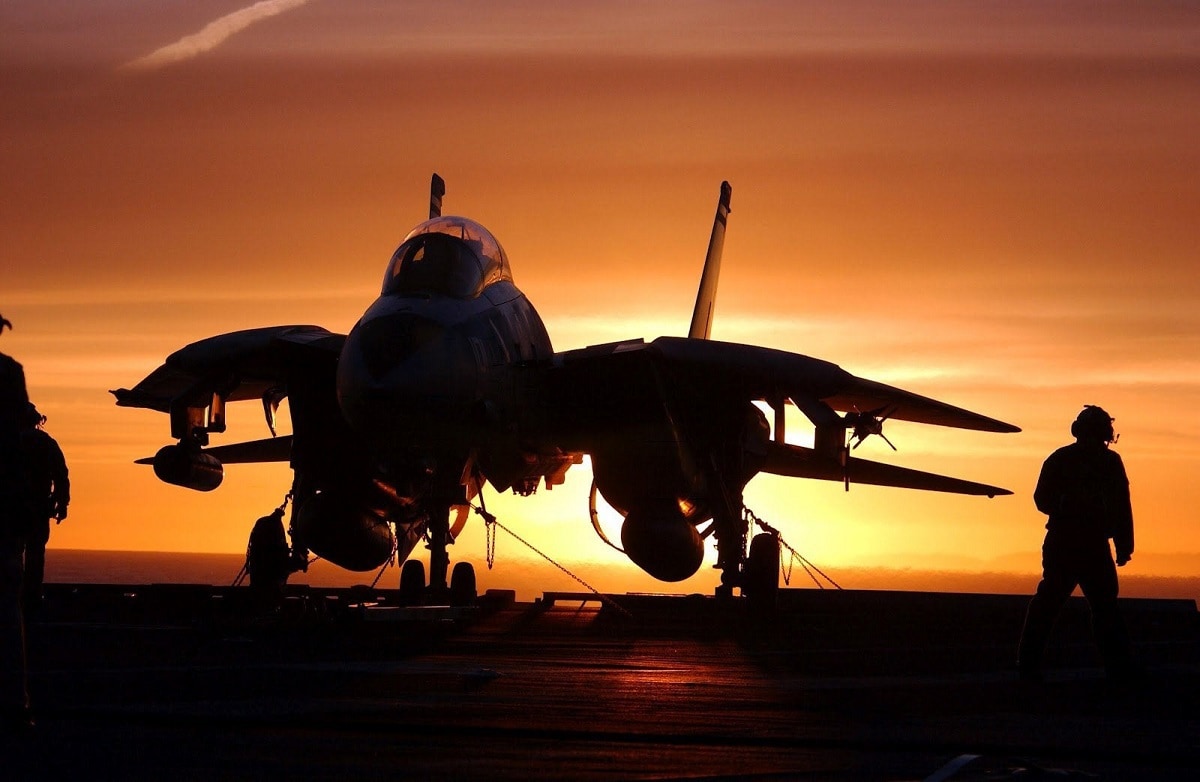
Image Credit: Creative Commons.
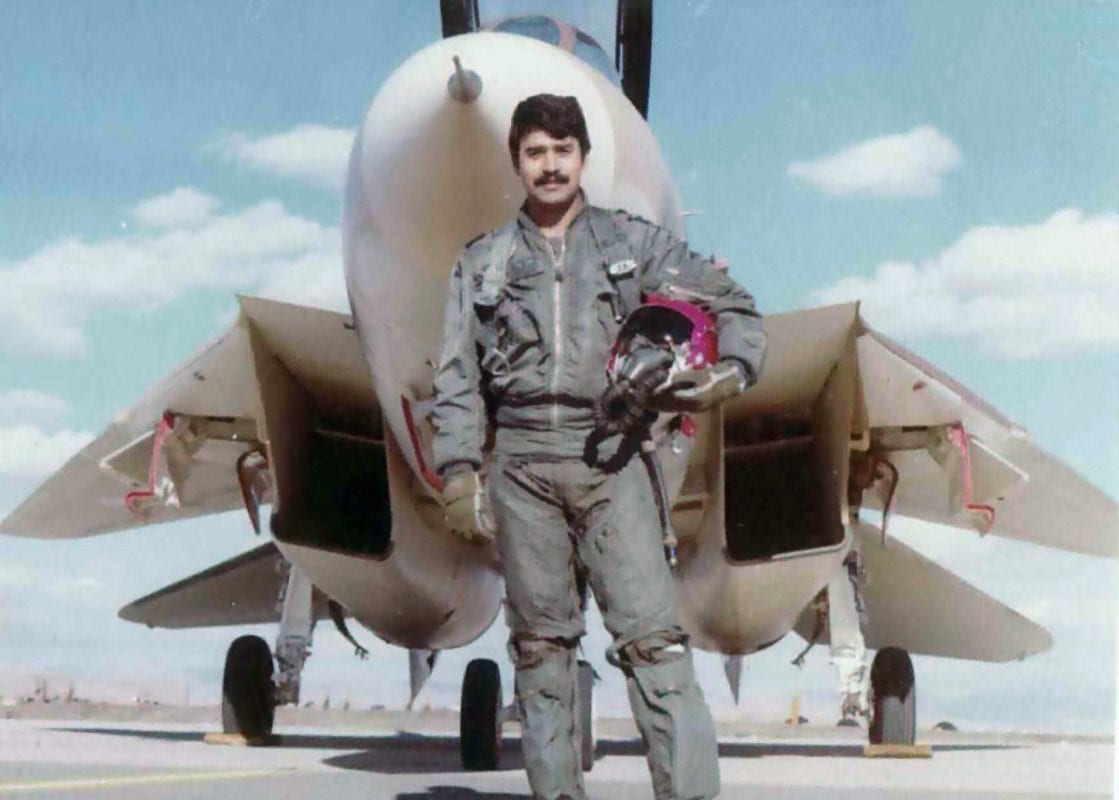
Iranian ace Jalil Zandi is credited with shooting down 11 Iraqi aircraft during the Iran–Iraq War, making him the most successful F-14 pilot.
While there is some controversy about the reliability of the Iranian Air Force pilots’ claims, there’s little to no about the 5:0 kill scoreboard attained by U.S. Navy Tomcat drivers.
Best Fighter Jets – The F-16 Fighting Falcon:
The “Viper” as its aircrews affectionately prefer to call it, boasts a 76:1 kill ratio.
Moreover, it can be disputed whether or not even one measly loss can be counted as a true air-to-air kill for the Falcon/Viper, as it was actually a mid-air collision, and in any event, it ironically happened at the hands of another F-16, during the Aegean dispute. On 23 May 2006. Two Turkish F-16s and one reconnaissance F-4 were flying in the international airspace over the southern Aegean at 27,000 feet (8,200 m) without having submitted flight plans to the Greek FIR authorities. They were intercepted by two Greek F-16s off the coast of the Greek island of Karpathos. During the ensuing mock dog fight, a Turkish F-16 and a Greek F-16 collided midair and subsequently crashed. The pilot of the Turkish plane survived the crash, but the Greek pilot lost his life.
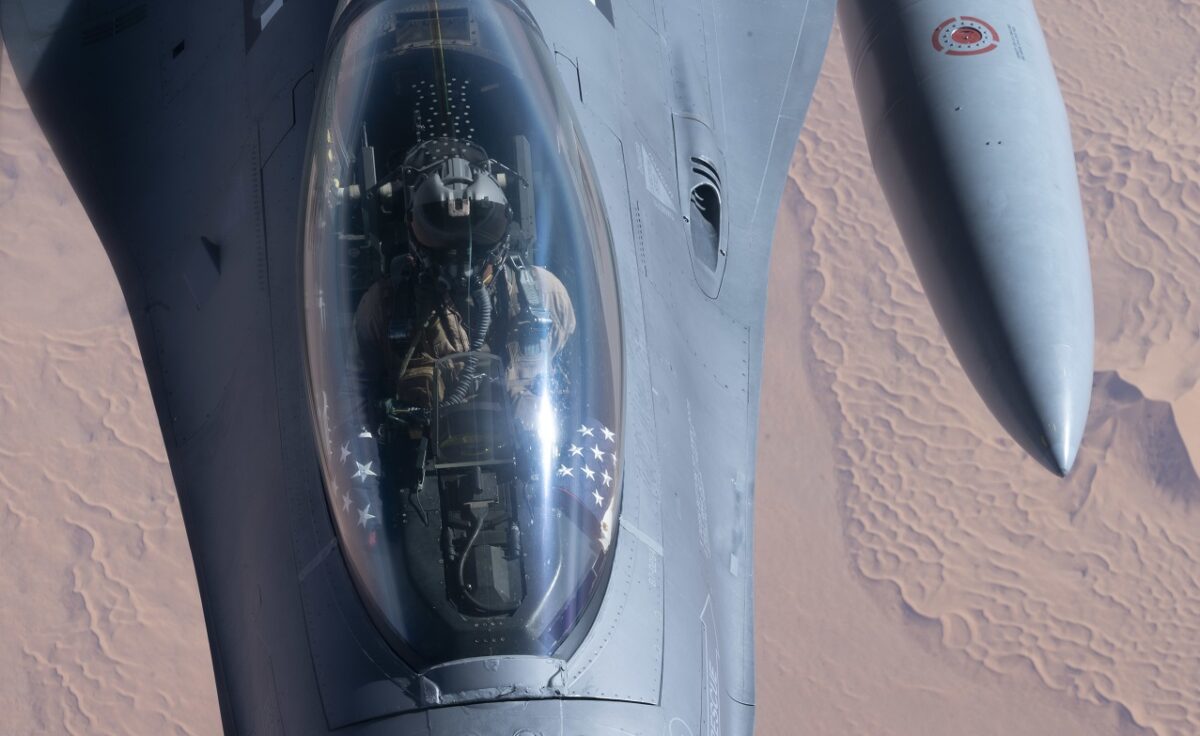
A U.S. Air Force F-16 Fighting Falcon receives fuel from a U.S. Air Force KC-135R Stratotanker above the United States Central Command area of responsibility, Dec. 8, 2021. The F-16 is a compact, multi-role fighter aircraft that delivers war-winning airpower to the USCENTCOM AOR. (Photo by Staff Sgt. Frank Rohrig)
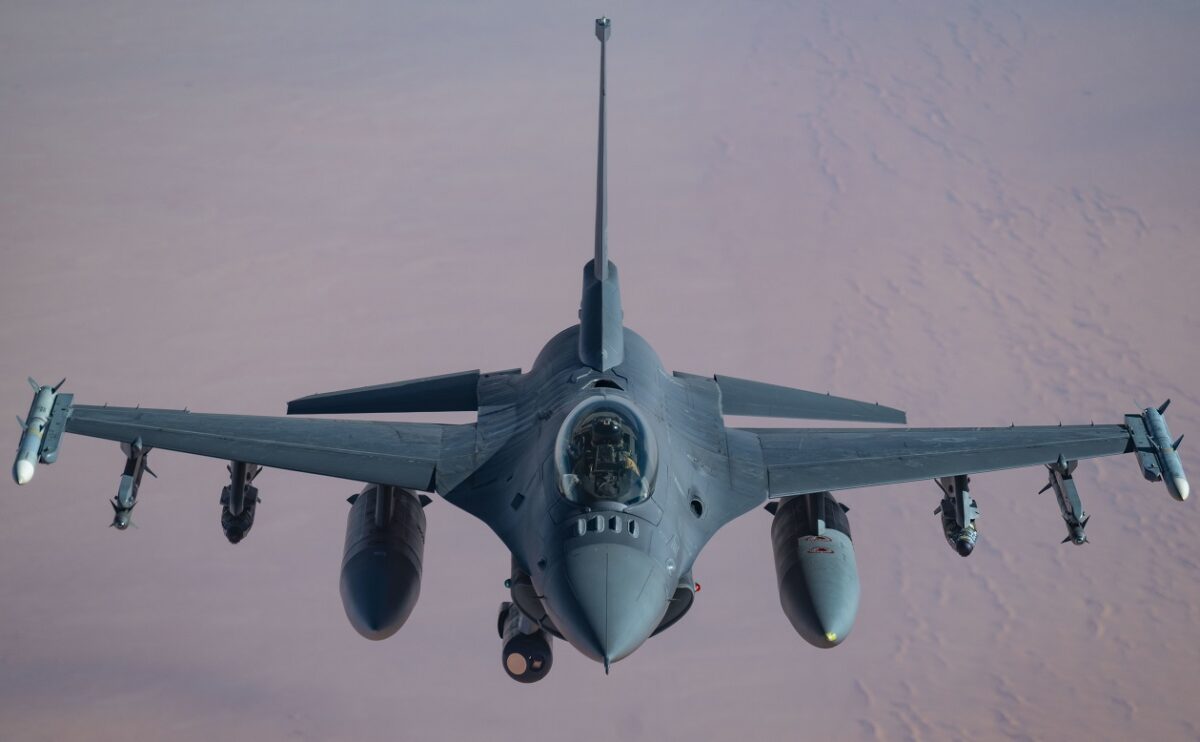
A U.S. Air Force F-16 Fighting Falcon receives fuel from a U.S. Air Force KC-135 Stratotanker, deployed to Al Udeid Air Base, Qatar, above the U.S. Central Command area of responsibility, Dec. 2, 2021. The F-16 Fighting Falcon is a compact, multi-role fighter aircraft that delivers war- winning airpower to the U.S. Central Command area of responsibility. (U.S. Air Force photo by Senior Airman Daniel Hernandez)
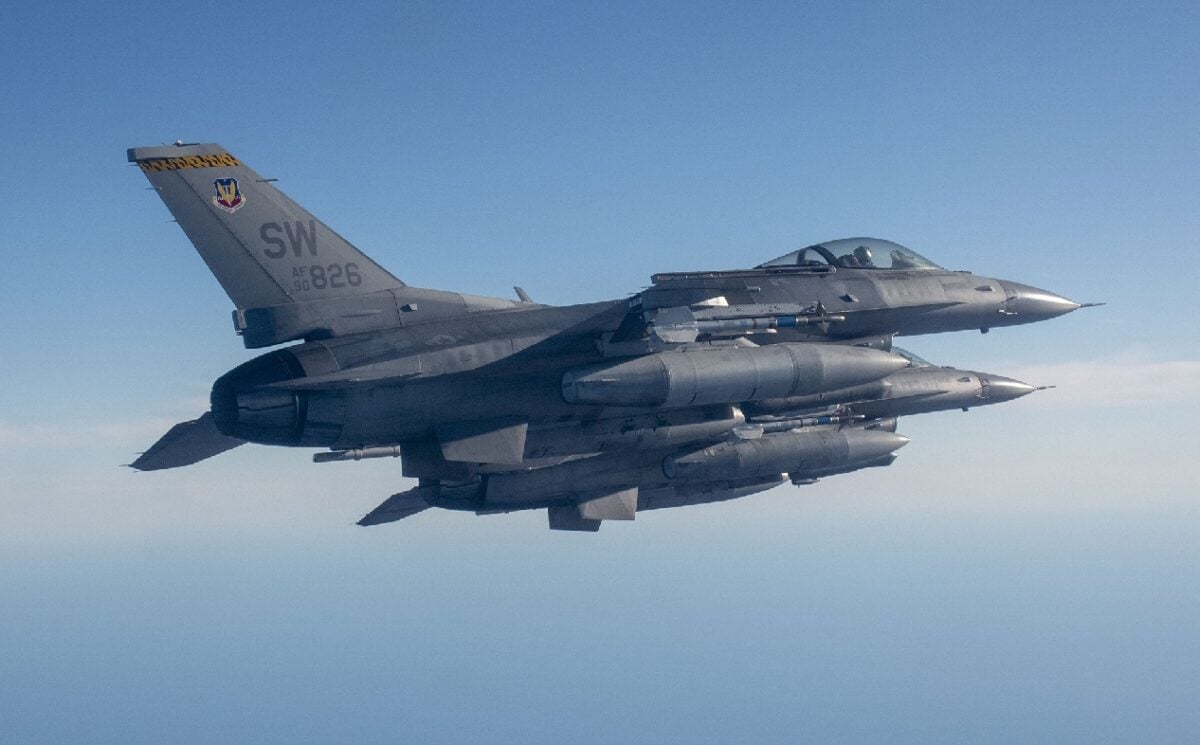
TYNDALL AIR FORCE BASE, Fla. – A pair of F-16C Fighting Falcons assigned to the 79th Fighter Squadron participate in the 53rd Weapons Evaluation Group’s Weapons System Evaluation Program East 22.02, hosted at Tyndall Air Force Base, Fla., Nov. 16, 2021. WSEP tests and validates the performance of crews, pilots, and their technology to enhance readiness for real-world operations.
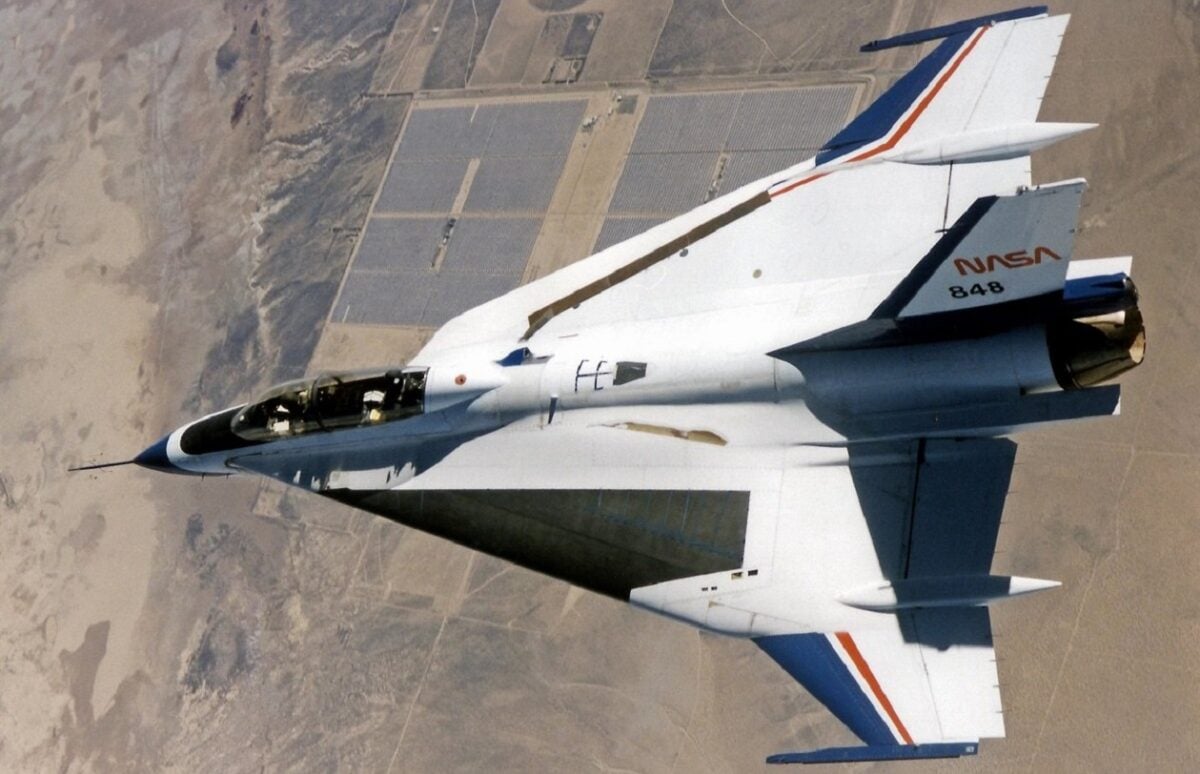
F-16XL. Image Credit: NASA.
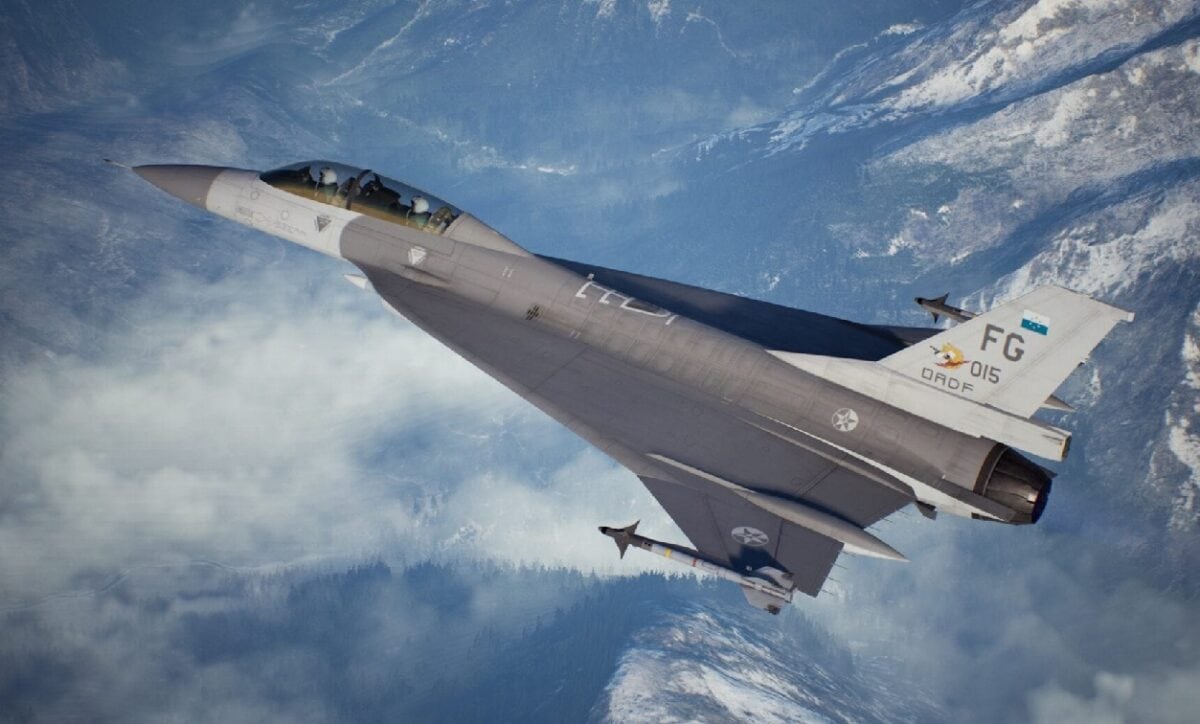
Image of what would have been the F-16XL, an artist rendering. Image Credit: Creative Commons.
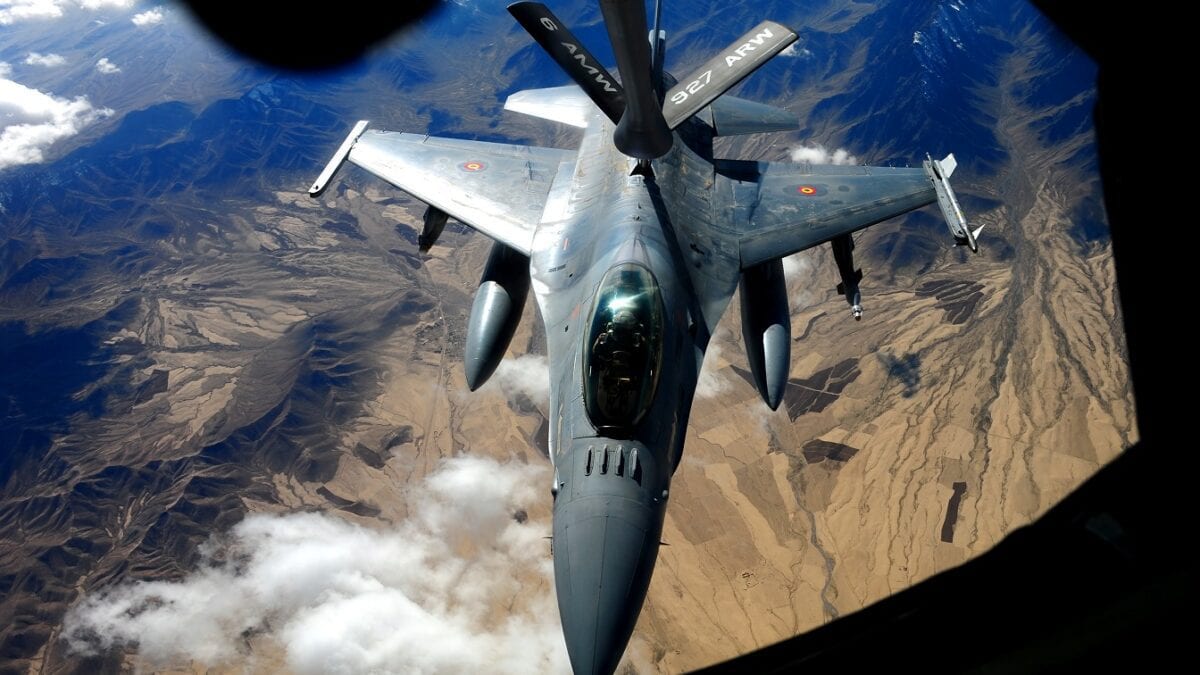
A Belgian F-16 Fighting Falcon receives fuel from a KC-135 Stratotanker, assigned to the 340th Expeditionary Air Refueling Squadron, while flying over Afghanistan in support of Operation Enduring Freedom, Feb. 25, 2011. (U.S. Air Force photo/Master Sgt. William Greer)
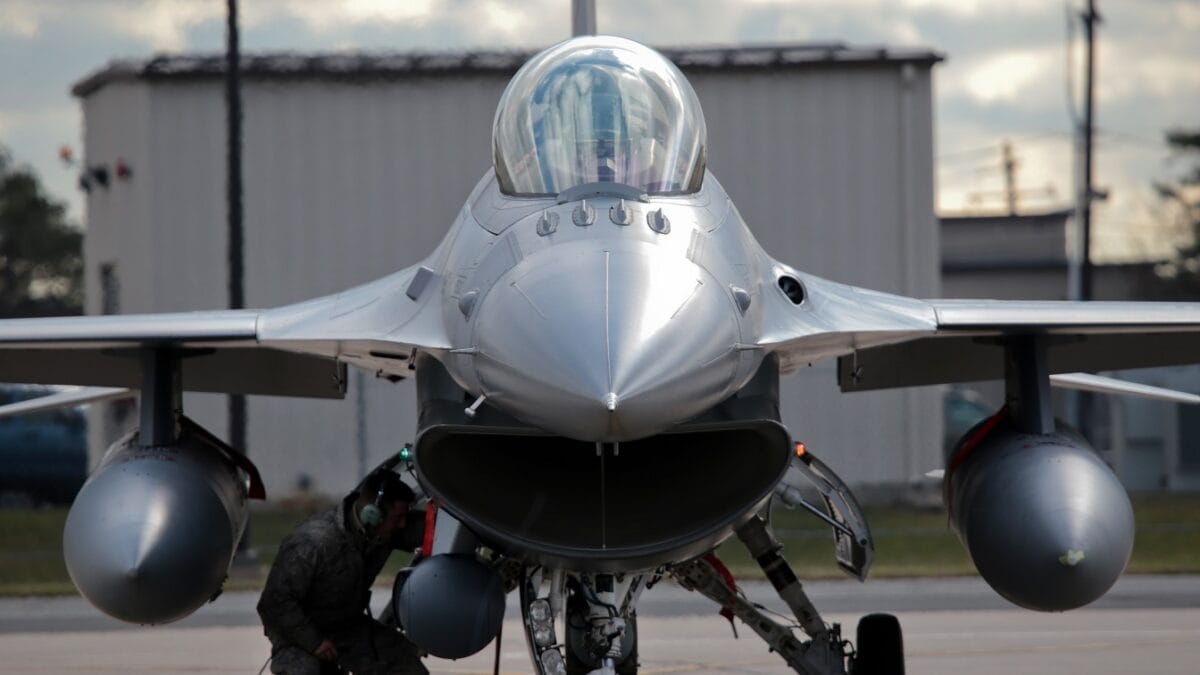
U.S. Air Force Senior Airman Austin Daniel, an F-16 crew chief from the New Jersey Air National Guard’s 177th Fighter Wing, looks over his assigned aircraft prior to a training mission at Atlantic City Air National Guard Base, N.J., Dec. 17, 2014. (U.S. Air National Guard photo by Tech. Sgt. Matt Hecht/Released)
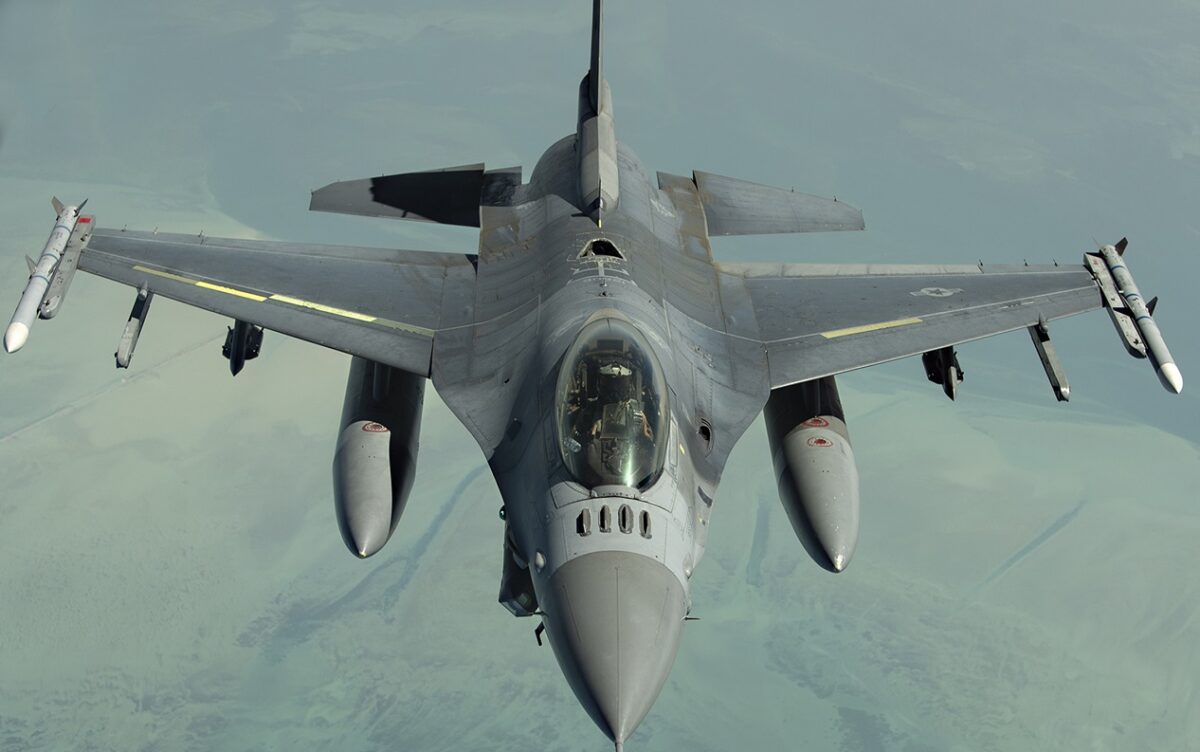
A U.S. Air Force F-16 Fighting Falcon assigned to the 77th Expeditionary Fighter Squadron flies over Southwest Asia, Feb. 24, 2021. U.S. Central Command maintains robust defensive capabilities to preserve security and stability throughout the region. (U.S. Air Force photo by Senior Airman Bryan Guthrie)
Best Fighter Jets – The F-86 Sabre:
This was the game-changer for U.S. Air Force pilots during the Korean War.
Embodying by the proverbs of “Desperate times call for desperate measures” and “Necessity is the mother of invention,” after being initially taken by surprise by the Soviet-designed MiG-15s that ravaged the USAF’s F-80 Shooting Stars and F-84 Thunderjets, U.S. R&D designed and deployed the F-86 in record time.
The Sabre jet couldn’t fly as high, climb as fast or maneuver as agilely as its Communist-made opponent, but it could dive faster, was more aerodynamically stable, and had a radar gunsight that came in handy during high-speed jet dogfights.
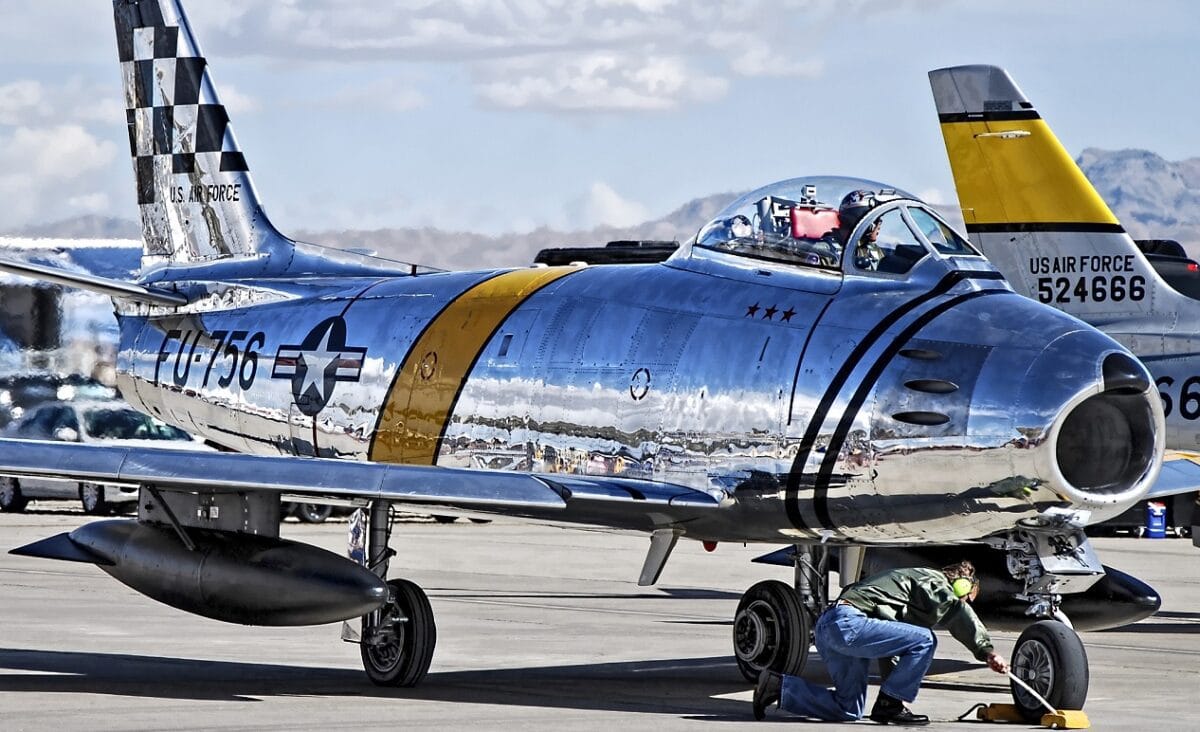
F-86. Image Credit: Creative Commons.
Admittedly, the long-accepted 10:1 kill ratio of the F-86 has had doubt cast upon it in more recent years.
But even when those raised figures as factored in, that still leaves us with 566 MiG-15s were destroyed by Sabres vs. roughly 100 F-86s shot down, which would put the U.S. kill ratio at about 5.6 to 1.
Best Fighter Jets – The Sea Harrier:
Whoa Nellie, this one’s sure to ruffle some feathers (yes, another avian pun), especially since I’m choosing the Harrier over the likes of the F-4 Phantom.
But as a former Air Force officer in my own right (albeit a Security Forces troop, not an aviator) and a former Federal agent, I was repeatedly encouraged by my instructors and mentors to “think outside the box,” so please hear me out here (yet another bad pun, yes I know, though at least this time it’s not bird-related).

A Sea Harrier FA2 of 801 Squadron is seen hovering above the deck of HMS Illustrious. 801 Naval Air Squadron (NAS) was the last Fleet Air Arm squadron to operate the Sea Harrier FA2. After a very successful drawdown and decommissioning ceremony, the final Sea Harrier was withdrawn from service on 31 March 2006 at RNAS Yeovilton and the Squadron disbanded. 801 NAS will be recommissioned in October 2006, to operate the Harrier GR7 and GR9 from RAF Cottesmore. 801 NAS will be joining the recently commissioned 800 NAS as well as 1 and IV (AC) Sqns RAF to complete the formation of Joint Force Harrier (JFH). Organization: Royal Navy Object Name: VL05_0420_065 Keywords: 801 NAS, HMS Illustrious , FA2, Sea Harrier, Joint Force Harrier, Aircraft carrier, Sunshine Country: UK
The Sea Harrier is one of only three jet fighter aircraft that is unbeaten in air-to-air combat, the other being the aforementioned Eagle along with the Sukhoi Su-27 Flanker, and in my professional opinion, the Flanker’s 6:0 score isn’t a big enough statistical sample to merit a Top 5 ranking.
The Harrier, on the other hand, is credited with 20 confirmed kills for no losses and thus played a key role in Britain’s victory over Argentina in the 1982 Falkland Islands War. And the Phantom, for all of its proud and very respectable combat history, can’t make a boast of that magnitude.
Agree or Disagree?
Okay, dear readers, your thoughts on my selections? Agree or disagree, and why or not why not? Let the tough comments begin.
Christian D. Orr is a former Air Force officer, Federal law enforcement officer, and private military contractor (with assignments worked in Iraq, the United Arab Emirates, Kosovo, Japan, Germany, and the Pentagon). Chris holds a B.A. in International Relations from the University of Southern California (USC) and an M.A. in Intelligence Studies (concentration in Terrorism Studies) from American Military University (AMU). He has also been published in The Daily Torch and The Journal of Intelligence and Cyber Security.

